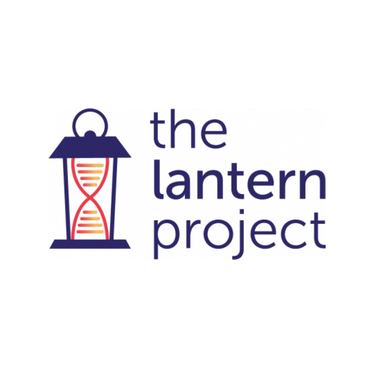Program eligibility
The Lantern Project* offers parallel testing of both enzyme assays with reflex to DNA sequencing of GBA or SMPD1 as appropriate, for individual patients with:
- Symptoms suggestive of Gaucher disease or ASMD
- Presumptive positive newborn screens for either disorder
*This testing program is not appropriate for carrier testing as enzyme assay will not reliably detect carriers.
About the test
β-glucosidase and acid sphingomyelinase enzyme assays, Lyso-GB1
- Dried blood spots are preferred, but whole blood is also acceptable.
SMPD1 and GBA gene sequencing
- Dried blood spots (DBS) are preferred, but whole blood is also acceptable. A saliva sample can be used if only gene sequencing is being ordered.
Bundled testing (Enzyme assay with reflex to sequencing and biomarker)
- Dried blood spots (DBS) are preferred, but whole blood is also acceptable. A saliva sample cannot be used for enzyme assay or biomarker measurement.
Sample requirements
Acid α-glucosidase enzyme assay
- Dried blood spots are preferred, but whole blood (EDTA) is also acceptable.
GAA gene sequencing
- Dried blood spots (DBS) are preferred, but whole blood (EDTA) is also acceptable. A saliva sample can be used if only gene sequencing is being ordered.
Bundled testing (Enzyme assay with reflex to sequencing)
- Dried blood spots (DBS) are preferred, but whole blood (EDTA) is also acceptable. A saliva sample cannot be used for enzyme assay.
Methodology
Enzyme assays
- β-glucosidase and Acid Sphingomyelinase activity is measured on dried blood spots (DBS) via Flow Injection Tandem Mass Spectrometry (FIA/MS/MS).
Biomarker assay
- Glucosylsphinogosine (Lyso-GB1) is measured on dried blood spots (DBS) via Liquid Chromatography Tandem Mass Spectrometry (LC/MS/MS).
Gene sequencing assays
- SMPD1 sequencing is performed using NGS and analysis of all coding exons and 10bp of flanking intronic regions. This assay cannot detect variants in regions of the exome that are not covered, such as deep intronic, promoter, and enhancer regions, areas containing large numbers of tandem repeats. Copy number variation (CNV) of three exons or more is reported. Single exon CNVs can also be predicted, but reported after follow-up confirmation is performed.
- GBA sequencing is performed utilizing long range PCR followed by NGS and analysis of all coding exons and 10bp of flanking intronic regions. This assay cannot detect variants in regions of the exome that are not covered, such as deep intronic, promoter, and enhancer regions, areas containing large numbers of tandem repeats. Copy number variation (CNV) is assessed by MLPA.
Turn-Around-Times (TAT)
β-glucosidase and acid sphingomyelinase enzyme assays: 3 days
SMPD1 and GBA gene sequencing: 3 Weeks
References
1. Baris HN, Cohen IJ, Mistry PK. Gaucher disease: the metabolic defect, pathophysiology, phenotypes and natural history. Pediatr Endocrinol Rev. 2014;12:72-81.
2. McGovern MM, Avetisyan R, Sanson BJ, Lidove O. Disease manifestations and burden of illness in patients with acid sphingomyelinase deficiency (ASMD). Orphanet J Rare Dis. 2017;12(1):41.
3. Wasserstein MP, Schuchman EH. Acid sphingomyelinase deficiency. NCBI GeneReviews (2015). Available at: https://www.ncbi.nlm.nih.gov/books/NBK1370/. Accessed July 19, 2018.
4. Kaplan P, Andersson HC, Kacena KA, et al. The clinical and demographic characteristics of nonneuronopathic Gaucher disease in 887 children at diagnosis. Arch Pediatr Adolesc Med. 2006;160:603-608.
5. McGovern MM, Dionisi-vici C, Giugliani R, et al. Consensus recommendation for a diagnostic guideline for acid sphingomyelinase deficiency. Genet Med. 2017;19(9):967-974.
6. Simpson WL, Hermann G, Balwani M. Imaging of Gaucher disease. World J Radiol. 2014;6:657-668.
7. Mistry PK, Cappellini MD, Lukina E, et al. Consensus conference: a reappraisal of Gaucher disease – diagnosis and disease management algorithms. Am J Hematol. 2011;86(1):110-5.
8. Bronstein S, Karpati M, Peleg L. An update of Gaucher mutations distribution in the Ashkenazi Jewish population: prevalence and country of origin of the mutation R496H. Isr Med Assoc J. 2014;16:683-685.
How to order
Step 1
Test selection and place order
Step 2
Specimen collection and shipment
Step 3
Get results
How to order
1. Test selection and place order
Select the correct test for your patient, and fill out The Lantern Project Requisition Form.
- Please make sure that all sections are completed, and that the patient has signed the informed consent form.
2. Specimen collection and shipment
- Obtain a sample for testing from the patient using one of the provided Revvity Omics test packs. If you do not have a kit available in your office, please contact us here and we can have one sent out to your office.
- Ensure that the patient sample is labeled with the patient’s name and date of birth.
- Please note that all biochemical assays require a dried blood spot sample or whole blood. Step-by-step instructions for collecting a sample can be found here.
- Samples may be submitted without a collection kit by following the guidelines for specimen requirements and completing the requisition form.
- Package the patient sample, informed consent form, and test requisition form back into the test kit, and utilize the included pre-paid shipping label to return the kit to Revvity Omics for processing.
- As a patient’s clinical presentation is an essential part of fully interpreting genetic test results, we ask that you kindly include any applicable medical records or clinical notes with the sample at the time of test submission.
3. Get results
Once Revvity Omics receives the sample, you will receive phone call to report abnormal findings, with a written report to follow within the established turnaround time for the ordered test. Bundled tests will be reported together in one comprehensive result.
This testing service has not been cleared or approved by the U.S. Food and Drug Administration. Testing services may not be licensed in accordance with the laws in all countries. The availability of specific test offerings is dependent upon laboratory location. The content on this page is provided for informational purposes only, not as medical advice. It is not intended to substitute the consultation, diagnosis, and/or treatment provided by a qualified licensed physician or other medical professionals.




























